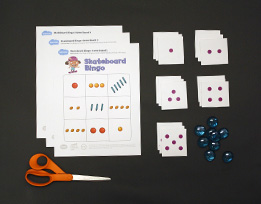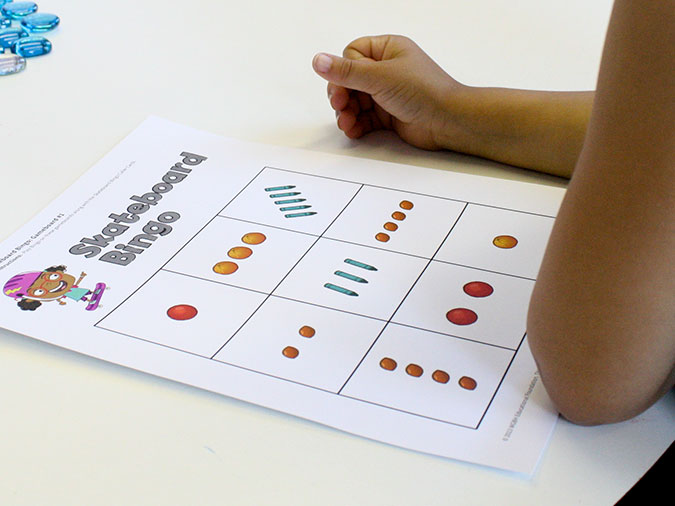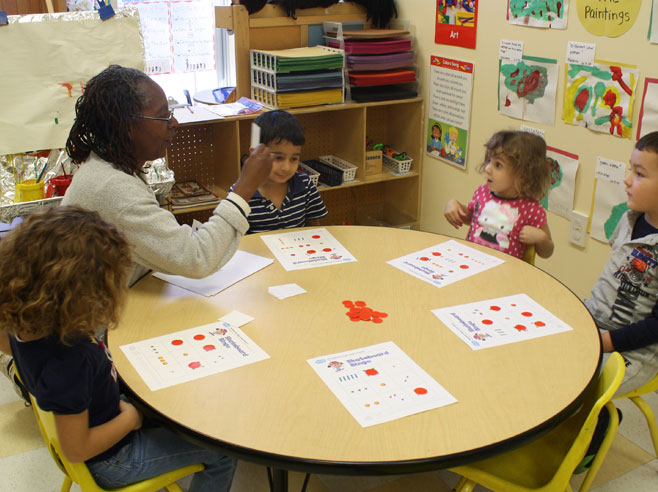Children play a game of bingo where they try to QUICKLY recognize the number of dots on caller cards and fill up their bingo boards.
Materials

- Skateboard Bingo: Game Boards (PDF)
- Skateboard Bingo: Caller Cards (PDF)
- Cardstock or plain paper
- Scissors
- 9 game markers (small blocks, paper circles or squares, or any small items you have enough of on hand) for each player
Preparation
- Print and copy enough bingo boards for all players.
- Print and cut out a set of dot plates.
- Set out a bingo board and nine game markers for each child.
Directions
- Describe the rules of the game to the children. Quickly show them a caller card with dots on it. After seeing it, they should look for a square on their bingo board that has the same number of objects. Sometimes they’ll have a match, sometimes they won’t. If they do, they should put a marker on that space. The object of the game is to get markers on three squares in a row or diagonally.
- Demonstrate how to use the dot plates. Hold each plate up for two seconds only. You may want to count out loud (“1, 2”) so children know how long to hold up the dot plate. After you demonstrate a few times, have each child practice holding up a dot plate for two seconds. Provide assistance to children who hold up the cards for too long or too short a time by counting out loud to “2” with them.
- After children practice holding up the dot plates, play a round of bingo with them with you holding up the plates. Hand out a Skateboard Bingo board to each child along with nine markers. Remind children that they should look for the square on their bingo board that has the same number of objects as are on the dot plate you show. Hold up each dot plate for only two seconds and say: Check your bingo board to see if you have this number of objects. Put a marker on the square if you do. Check that children have marked the correct squares. The game ends when one child has three squares in a row or diagonally with markers on them. Alternatively, children could win when one or all children have filled in all the squares.
- Next, have the children play together, with one child holding up the dot plates. The child who wins the round holds up the dot plates for the next round of the game.
- Offer assistance when needed.
Note: Some children may need to count the objects on their bingo boards to check for a match. This is fine, because counting can help build subitizing skills. If they are still struggling, have the group work together to check the matches and “teach” each other.
This is also a great game to do as a whole class. Simply make multiple copies of the bingo boards.

